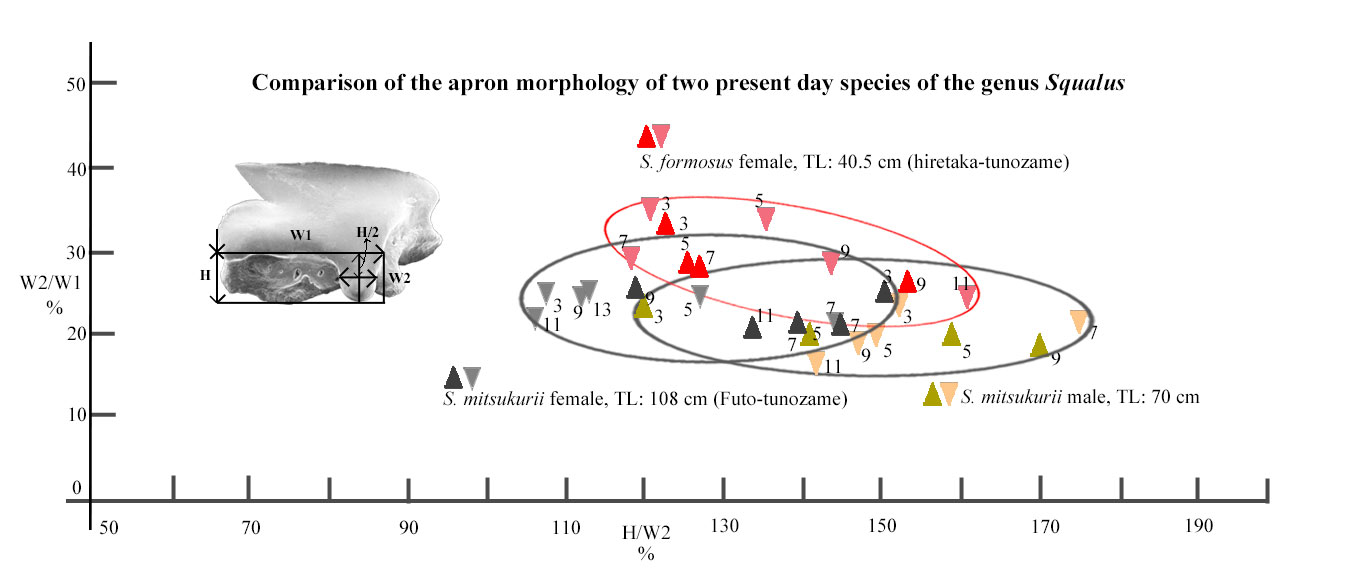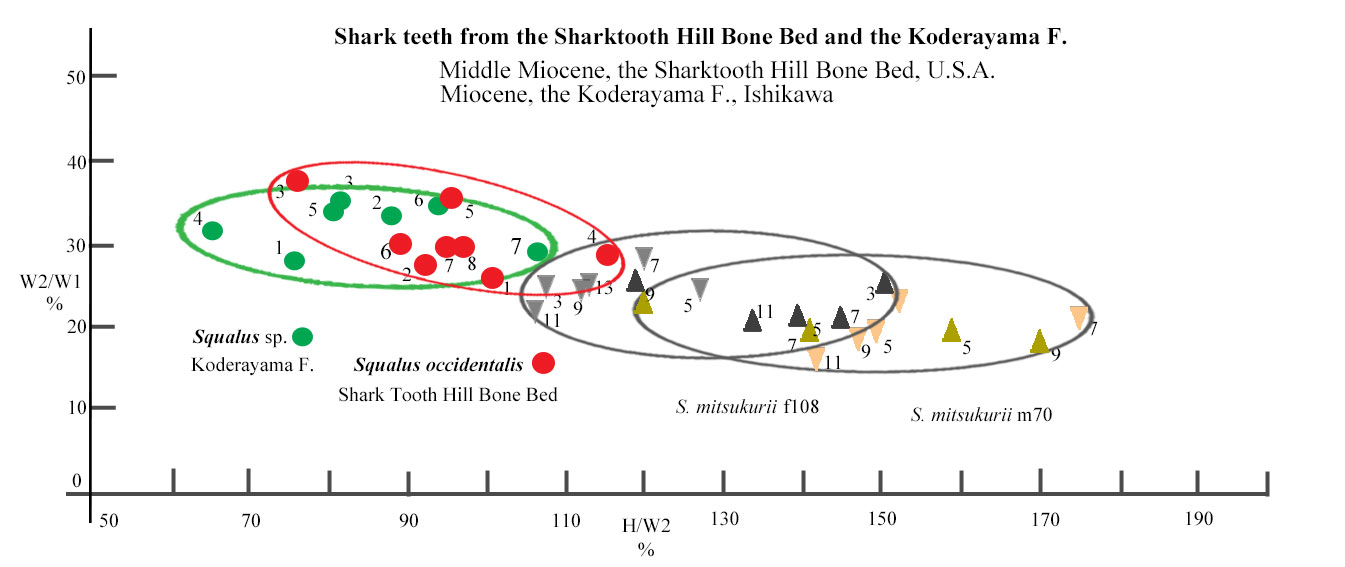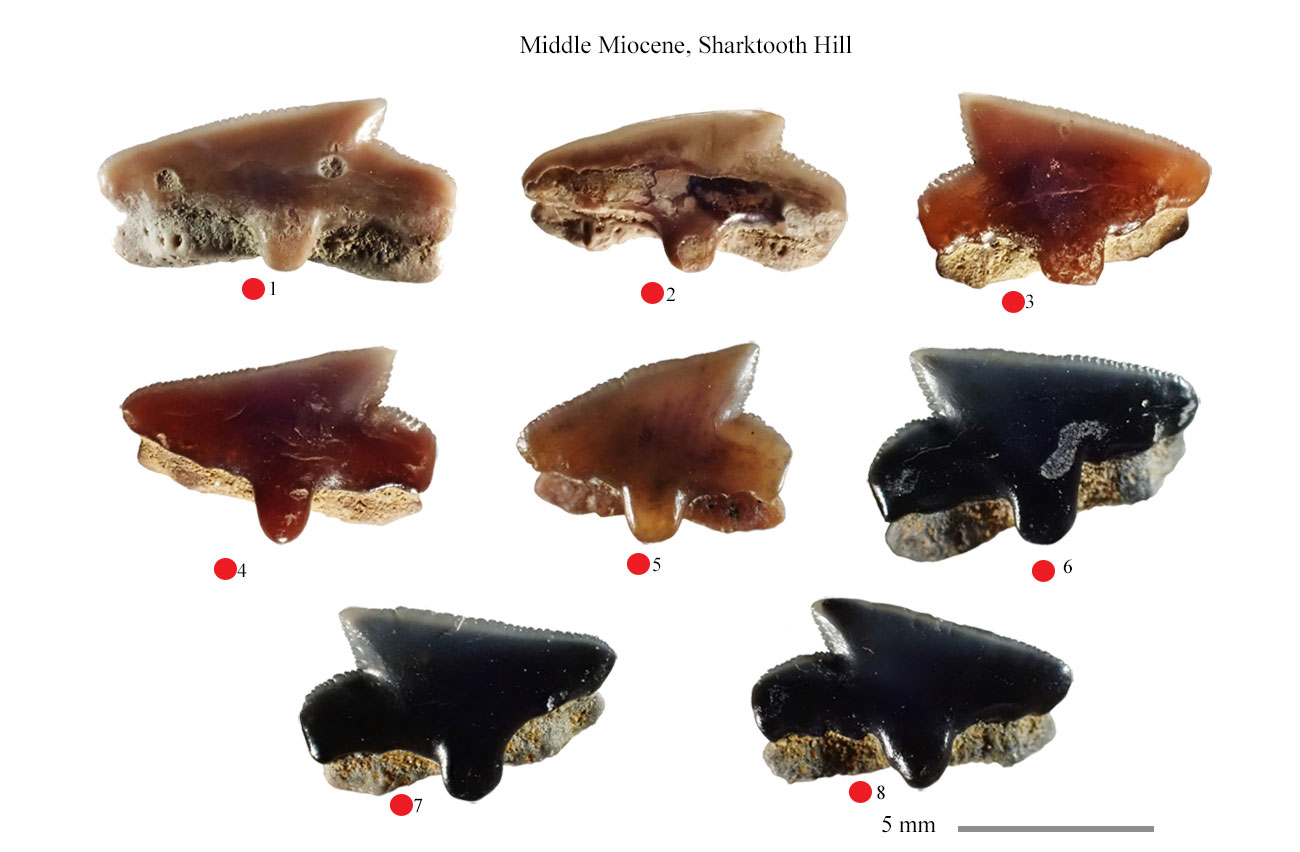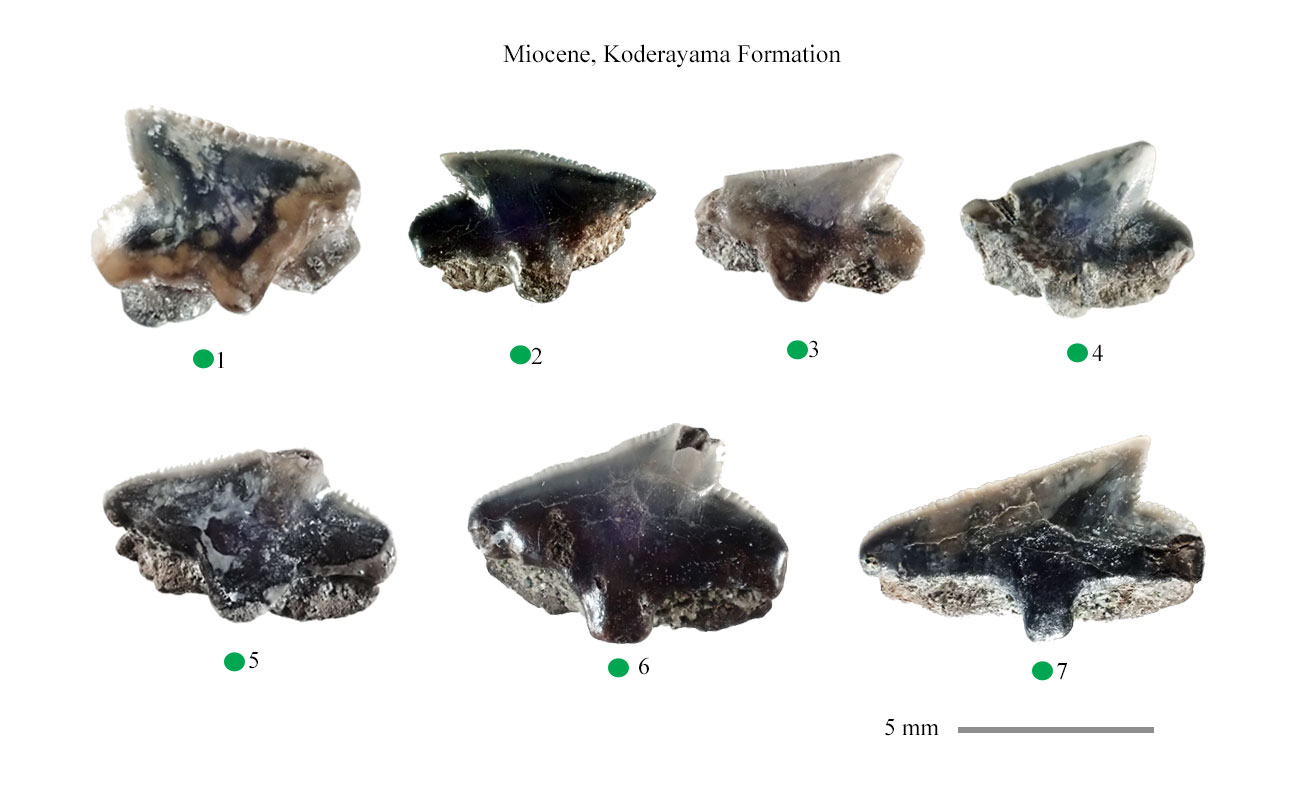| Fig. 1. Measurements of the dental aprons of two extant shark species of the genus Squalus. |

| Fig. 2. Comparison of the dental apron of sharks of the genus Squalus from two Miocene localities: the Kodera Mountain Formation, Ishikawa Prefecture, Japan, and the Sharkytooth Hill Bone Bed, USA. |

| Measurements indicated that the fossil teeth of the Sharktooth Hill Bone
Bed have wider and larger aprons than those of the two extant species shown
in Figure 1. Fossil shark teeth from the Kodera Mountain Formation may
have even wider and larger aprons than those of the American Sharktooth
Hill fossil teeth. The results of the measurements carried out in the present study show that the size and shape of the tooth aprons of sharks of the genus Squalus are characterised by continuous variation. In other words, no sharks are considered to have aprons of a unique size and shape. |

